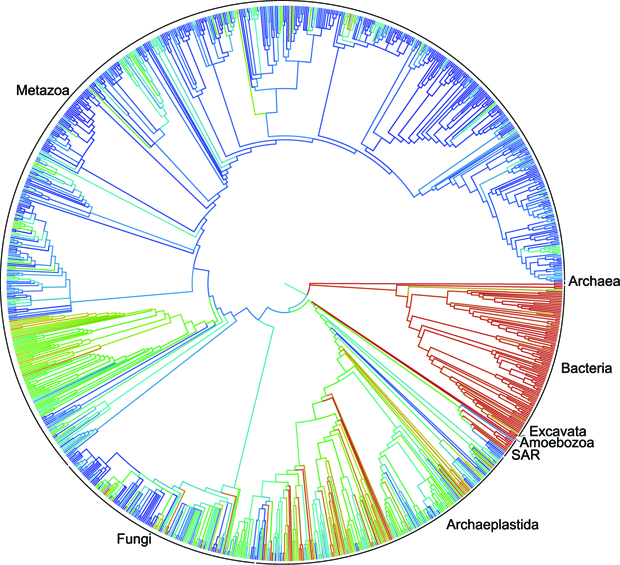"Tree of Life" connects every living organism on Earth
Scientists have unveiled a new "tree of life," demonstrating just how the world's 2.3 million species of animals plants, fungi and microbes are connected.
The project, involving 11 institutions and published online in Proceedings of the National Academy of Sciences, depicts the relationships among living things as they diverged from one another over time, tracing back to the beginning of life on Earth more than 3.5 billion years ago.
"This is the first real attempt to connect the dots and put it all together," said principal investigator Karen Cranston of Duke University. "Think of it as version 1.0."
Tens of thousands of smaller trees have been published over the years for select branches of the tree of life - some containing upwards of 100,000 species. But this is the first time those results have been combined into a single tree that encompasses all of life. It has been turned into a digital source that looks more like a colored pinwheel than a tree and is available free online for anyone to use or edit, much like a Wikipedia for evolutionary trees.
Scientists say understanding how the millions of species on Earth are related to one another could lead to the discovery of new drugs, increase crop and livestock yields, and trace the origins and spread of infectious diseases such as HIV, Ebola and influenza.
Rather than build the tree of life from scratch, the researchers pieced it together by compiling thousands of smaller chunks - 484 from thousands already published online - and merging them into a gigantic "supertree" that encompasses all named species.
While the project is ambitious, scientists acknowledge it is no way complete. Insects and microbes, particularly, remain elusive.
That's because even the most popular online archive of raw genetic sequences - from which many evolutionary trees are built - contains DNA data for less than 5 percent of the tens of millions of species estimated to exist on Earth.
"As important as showing what we do know about relationships, this first tree of life is also important in revealing what we don't know," said co-author Douglas Soltis of the University of Florida.
To help fill in the gaps, the team is also developing software that will enable researchers to log on and update and revise the tree as new data come in for the millions of species still being named or discovered.
"This is just the beginning," said University of Michigan evolutionary biologist Stephen Smith. "While the tree of life is interesting in its own right, our database of thousands of curated trees is an even more useful resource. We hope that this publication will encourage other researchers to contribute their own studies or to enter information from previously published sources."
